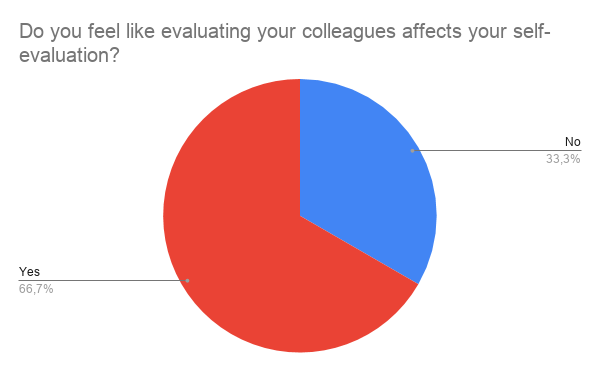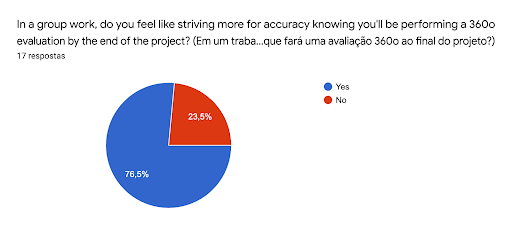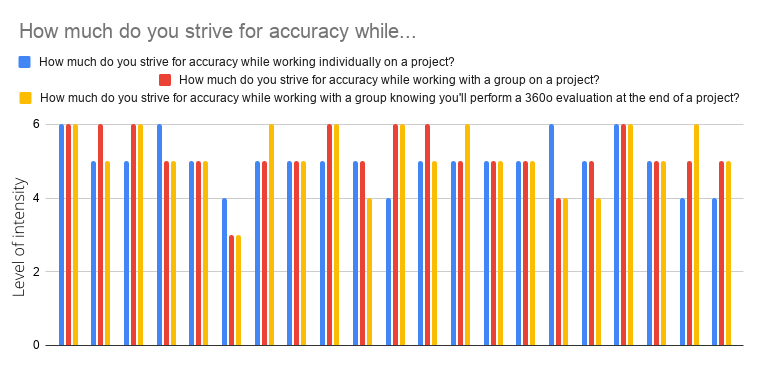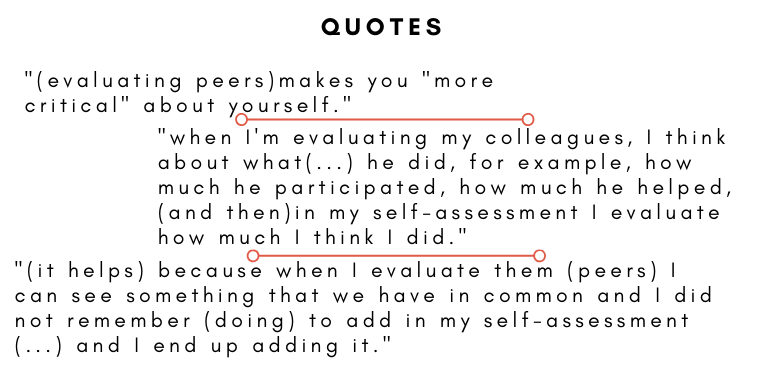Impacts of the 360 degree assessment in grade 8 students’ willingness to strive for accuracy while working in a group.
How does making a 360 degree assessment (Teacher's-Assessment, Self-Assessment, Peers-Assessment from 3 other learners from the same group) impact on learners' effort to strive for accuracy during a project in Grade 8?
General topic of interest
Feedback Culture | Peer-To-Peer feedback | Self-Evaluation | 360o Assessment in a school project in PBL | Habits of Mind: Striving for accuracy
Participants
Learners from grade 8 from Middle School in São Paulo, who have already done a 360 degree assessment twice in 2020 for 2 different projects (PBL) during Metacognition classes.
Data collecting approach
Google Forms with questions asking how would they evaluate their own perception of their willingness to strive for accuracy after the first 360 degree assessment and then how it affects their own self-evaluation.
Data collecting example
Google Forms, Google sheets and graphics with the data collected.
Emerging results
All data collected is displayed in the graphics below.
Reflections
From the data collected we could better understand how learners face 360 degree assessments, and that more than the assessment itself, the process of having to pay attention to peers' throughout a project affects how they actually assess and think about their own learning process.
Next steps
We need to operationalize the 360 degree assessment in a way that it creates more opportunities of face to face exchanges, creating opportunities for collective insights.








